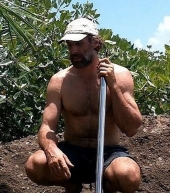posted 7 years ago
The original poster was writing in 2012, last poster in 2014.
As I understand things, conventional production of maple syrup requires cycling between freezing and thawing. In the USA-NE and Quebec (nearby other parts of Canada?), this freeze thaw is only driven by the day/night. As global warming advances, the ability of the USA-NE to produce conditions necessary for conventional maple syrup production will largely go away, which is expected to have large consequences.
Again, as I understand things, about 10-12 years ago, someone (in Vermont? At UVermont?) came up with a new method. A relatively young sugar maple gets "beheaded", and on the top of the trunk is attached a vacuum apparatus. No tapping required. And this young tree, can apparently produce as much sap as many much more mature trees. So writeups conjured up the idea of having a quarter section (or whatever) of trees, and producing billions of gallons of sap. A question I have, is the character of the sap going to be changed by the warmer conditions? This work was sort of intended to keep places like Vermont producing maple syrup long after there would no longer be the freeze/thaw cycles to produce flow naturally.
The last poster was in central BC, which means he is south of me and on the other side of at least one mountain chain. I am on the eastern slopes of the Rockies. He was successfully working with sugar maples 4 years ago in a conventional way. The thing that is different with places like Dawson Creek, is that we get Foehn winds in the winter (local name is chinook (snow eater)). We can go from -30C at noon to +10C at midnight (and the winds will be strong). So by and large, our freeze/thaw cycles are disconnected from the clock, and not predictably connected to the calendar.
But if what the tree needs for character, is similar ranges of maximum/minimum, then things could still work here. What I think you want to do, is to establish a "sugar bush" (a mixed forest collection of trees, dominated by sugar maple), that is not planted at anywhere near plantation density. You want to establish a collection of maples (and other trees) to become mature, to provide some of the environment. And in the spaces between the "mature trees", one plants sacrifical maples to be attached to vacuum systems. As one approaches spring, a sampling and analysis system is monitoring the sap, and when the specifications are right, the vacuum is turned on to produce sap for collection.
Does this just happen once for "spring", or does it happen with many chinooks? Does just the tree above ground need to go through the freeze/thaw cycle, or does some fraction of the root system have to go through this as well? Maybe a person needs a bed of wood chips to provide insulation and help hold moisture, so that the maple trees are not trying to produce sap from frozen water in the ground? It's possible there is some magic amount of insulation required (which probably changes according to conditions).
In any event, it's entirely possible that you only need one or two "vacuum maples" to produce a harvest to turn into syrup. I believe once sucked dry (so to speak), you pull the tree and plant a new one. But maybe coppice or pollard comes into this?
We do get winterkill here. Native trees are largely aspen, some willow and poplar, some spruce and pine. Other stuff. But if you were to just say trembling (or quaking) aspen, you are close. Chinook blows in, sun comes up at some point, tree begins to think it is spring, sap starts running, chinook goes away, sap freezes and big chunk of the tree dies. I see trees where the entire thickness of the tree above some point is dead from this sort of thing. But it also happens that the dead part is more or less on the south side of the tree. I am thinking that a person wants to grow a row or two of conifers on the south edge of the sugar maple patch, which is tall enough to block out most of the sunlight between say beginning of November and maybe beginning of March. Hence, after the beginning of March, the sun gets high enough in the sky that is starts to illuminate the tops of the maples (and other trees) in the grouping. Or maybe you don't want complete blocking of sunlight, but rather modulation. So you have 2 (or 3) rows of conifers of about the same height requirements, but spaced further apart. So any given area within the sugar maple area may get 20 minutes of sunlight as the sun sweeps across the sky, before the next conifer blocks the sun for some length of time.
I live on a north facing slope. On the winter solstice, I think we get a bit more than 4 hours of direct sunshine on the ground. Looking forward to the spring equinox, we get quite a bit more than 4 hours, but still nowhere near 12 hours.
Parts of central BC, and most of the PNW gets considerably more precipitation than we do here. I don't have a good feel for how PNW precipitation compares to USA-NE and Quebec, but they too will also get significantly more water than we get. But, if we get to put wood chips on the ground to keep the frost from going down so far in the winter, then the Back to Eden effect may also allows us to produce crops which normally need a larger water input.
Food for thought. If this interests you, think OpenSource. Think Creative Commons. Think Sneakers (too many secrets). The road to hell is paved in IP.





 2
2












 1
1
















 1
1

























 1
1
















 2
2




 3
3




 3
3












